Ketamine Assisted Therapy 101
Posted under: Latest News, News and Science

Explore the transformative potential of ketamine therapy in mental health. From its origins as an anesthetic to its contemporary role in treating conditions like depression and PTSD, we delve into its mechanisms, administration, and safety considerations. Join us as we navigate the landscape of ketamine-assisted therapy for a deeper understanding of its benefits and implications.
.
.
What is Ketamine?
.
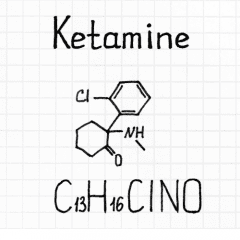
.
Ketamine is a painkiller and dissociative anesthetic that, beyond its primary use in surgery and veterinary medicine, has gained a lot of attention for its potential therapeutic effects on mental health. Classified as an NMDA receptor antagonist, ketamine influences the brain's glutamate system, is implicated in mood regulation, and is seen to improve neuroplasticity which can help interrupt ruminative patterns.
.
In recent years, it has been explored off-label as a treatment for conditions like treatment-resistant depression, PTSD, OCD, suicidality, and anxiety. Administered through various methods, ketamine's distinct characteristic effect is its relatively rapid onset of action, offering a potential alternative for individuals seeking quicker relief from severe mood disorders.
..
What is the story?
..
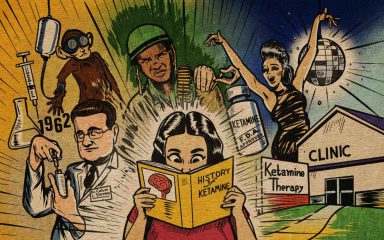
..
Ketamine was first synthesized in 1962 by Parke-Davis (now a part of Pfizer) as a replacement for phencyclidine (PCP) with fewer hallucinogenic side effects. Introduced to medical practice in the 1970s and approved as an anesthetic, it found favour in both human and veterinary medicine due to its safety profile. It was used by the military as a battlefield anesthetic in Vietnam.
..
The dissociative and hallucinogenic properties of ketamine led to its recreational use, contributing to its classification as a controlled substance. In the 21st century, researchers began to investigate ketamine's potential for treating depression; the first study using ketamine to treat depression was published in 205 propelling it into the spotlight as a novel and unconventional approach to mental health therapy. Now it continues to emerge as a viable treatment option for people suffering from chronic pain, depression. PTSD, suicidal ideation and more and hundreds of studies are taking place around the globe to better understand its mental health applications.
....
What is Ketamine Therapy?
.
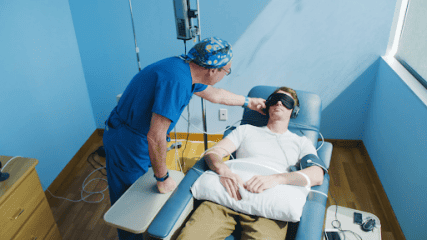
....
Ketamine-assisted therapy, as the name suggests, is ketamine and therapy mixed together. Ketamine is administered to the patient, who is relaxing in a comfortable chair, typically through an IV. Some practitioners will have patients wear sleep masks or headphones. The number of sessions will vary.
....
Unlike traditional antidepressants, which often target serotonin or other neurotransmitters, ketamine's unique mechanism of action may contribute to its rapid onset of therapeutic effects, alleviating symptoms in just a matter of hours or days for some. The treatment induces a dissociative state, altering perceptions and consciousness.
....
The exact neurobiological mechanisms underlying its antidepressant effects are still under investigation, but it is thought to involve changes in synaptic plasticity and the activation of specific NMDA receptors, a part of the body’s glutamate system. Abnormal levels of glutamate have been linked to depression; this neurochemical helps the brain form new connections and repair old ones. Glutamate also plays a large role in pain perception, meaning ketamine also has the ability to impact chronic pain symptoms.
....
Ketamine therapy represents a promising yet nuanced approach to mental health treatment, requiring careful consideration of its potential benefits and risks. Results from ketamine therapy vary widely, just as each individual’s mental health varies drastically from one person to another.
...
How does Ketamine feel?
...
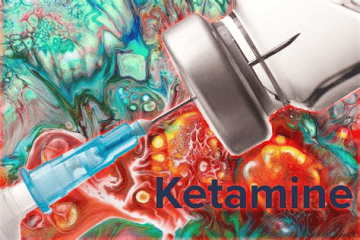
.
It depends on the dose. As a dissociative, many people report feeling euphoria, light-headed dissociation, relaxation, and a sense of floating outside the body. Some report heightened sensory awareness, such as brighter colours and sounds, and perceptual changes for example to time passing.
.
Still others report blurred vision, confusion, nausea, poor coordination, and slurred speech. There are potential side effects to be aware of, including nausea, dizziness, double vision, and confusion.
.
Techniques of administration
.
Infusions: delivered through an IV and typically last around 40 minutes
Intramuscular: a shot of ketamine injected into one of your larger muscles; also typically lasts around 40 minutes
Lozenge; taken orally, tablets that dissolve under the tongue
Nasal: a ketamine nose spray, which can either be administered at home or in a doctor’s office
..
How to prepare a session?
....
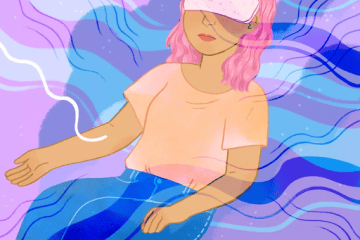
....
- Mindful Fasting: Refrain from eating or drinking for at least 8 hours prior to your session. This ensures optimal absorption and effectiveness of the ketamine experience.
- Comfort is Key: Dress in comfortable clothing that allows for ease of movement and relaxation. Choose garments that make you feel at ease and unrestricted.
- Set the Mood with Music: Consider curating a playlist of music that resonates with your mood and intentions for the session. Music can enhance the ambiance and guide your emotional journey.
- Immersive Experience with Headphones: Bring your headphones to immerse yourself fully in the auditory landscape of your chosen music. Block out external distractions and create a cocoon of sound for deeper introspection.
- Enhance Relaxation with Meditation: Engage in a brief meditation practice before the session to calm the mind and center yourself in the present moment. Cultivate a sense of inner peace and receptivity to the transformative experience ahead.
....
Where is it Legal?
....
Approved since the 1970s as an anesthetic, the use of ketamine to treat psychiatric conditions is considered ‘off-label’ meaning it is legal for a doctor to prescribe, but it is not approved for that particular use case. The exception is Spravato, a nasal spray (esketamine) which was approved by the US Food and Drug Administration in 2019.
....
The use of ketamine for mental health treatment varies from country to country and legislation to legislation. You can have a look at sources that breakdown if this type of therapy is available where you live.
....
Safety Precaution & Price
....
When administered in a safe environment, under supervised conditions and at low doses, ketamine can be highly effective. Although it is generally well-tolerated, if you have high blood pressure or schizophrenia, these can be risk factors.
...
Experts strongly advise against self-medicating with ketamine, as it can have psychical and psychological side effects, and people can develop a dependency over time.
...
Ketamine infusions can be very pricey ─ a treatment running over two to three weeks at a psychiatrist’s office, with in-depth pre and post-treatment consultations can run up to $4,500 (€4,150) which means they aren’t incredibly accessible.
...
Note: If you’re suffering from a mental illness and are curious about using psilocybin or any other psychedelic therapy, please consult one of the relevant medical authorities first. Do not self-prescribe, it’s vital to have the right support and guidance when using psychedelics as medicine.

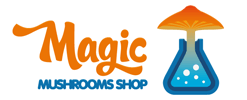
February 12, 2024